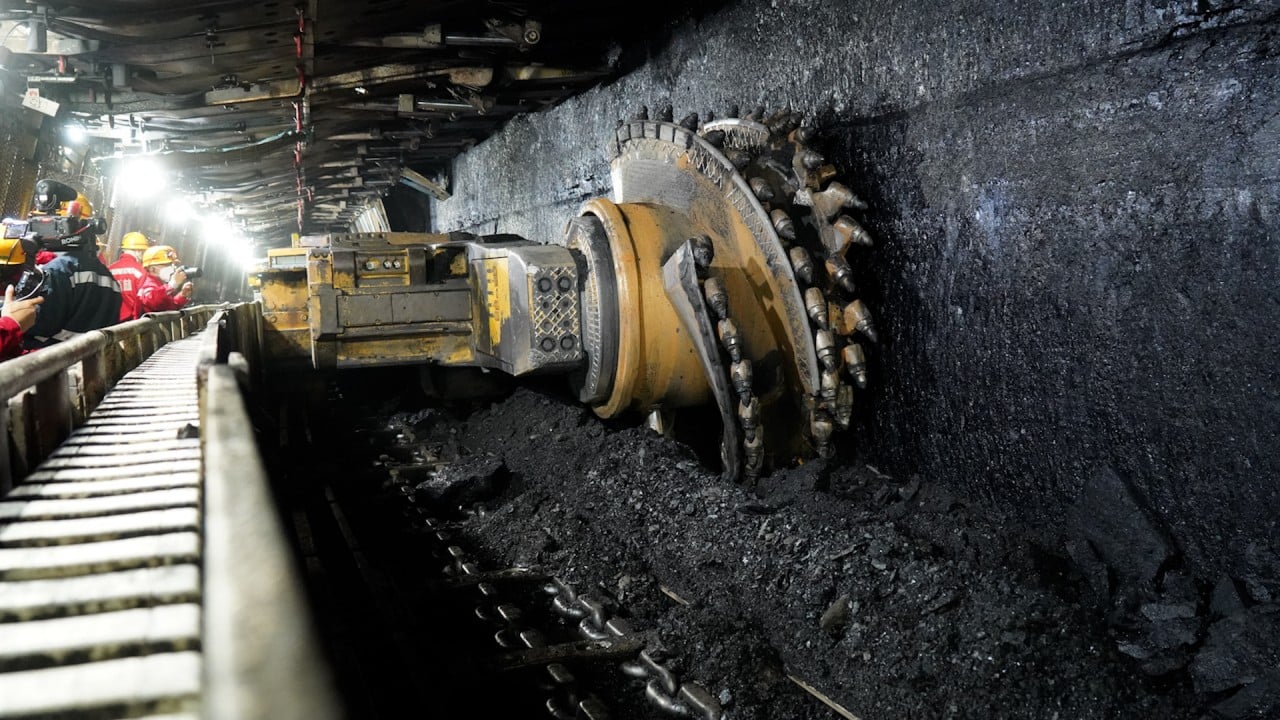
China is unlikely to face large-scale power outages this summer but current fixes not financially and environmentally sustainable, analysts say
- ‘We do not see that another large-scale power shortage is likely this summer,’ Lucas Zhang Liutong of Hong Kong-based consultancy WaterRock Energy Economics says
- China must resolve the issue of meeting electricity demand without relying on ever-increasing coal power capacity: Crea analyst
China is unlikely to see large-scale power shortages this summer even with heatwaves driving up demand for cooling and more frequent droughts threatening the country’s hydropower output, analysts said.
Beijing has mandated provincial governments to avoid blackouts “at all costs” by producing more coal power and improving power transmission infrastructure, and the country is now better prepared after last year’s hydropower outage in southwest Sichuan province in the summer.
Lower coal and gas prices, and lower-than-expected demand for power due to a slow recovery in the economy are also factors that will reduce the likelihood of power shortages.
“We do not see that another large-scale power shortage is likely this summer,” said Lucas Zhang Liutong, director of Hong Kong-based consultancy WaterRock Energy Economics. This is mainly because of positive “dark spread” – the difference between the price received by a generator for electricity produced and the cost of fuel needed to produce that electricity – at coal plants, which allows them to generate electricity to meet rising demand, relatively weak manufacturing activity due to weak exports, and proactive government measures forcing energy firms to prepare better for the expected spike in demand, he added.
The country’s meteorological department also warned that rainfall in the Hubei, Hunan, Chongqing and Sichuan provinces will be 20 to 50 per cent less than last year, and regional droughts might occur to bring more uncertainty to China’s hydropower supply.
“China – still in the process of developing and reforming its power sector and grid architecture – is now afforded the key opportunity to course correct in real time, adding, enhancing and revising its grid to ensure that the power system is ready for the ‘new normal’ of 2023 and beyond,” Thomas and Fishman said in an article last month.
The State-owned Assets Supervision and Administration Commission of the State Council called for power generators to boost production “as much as possible”, and for grid companies to ensure grid security and “hold the bottom line of no blackouts and no power rationing at all costs” in a meeting this month.
The country has ramped up coal power supplies since the hydropower crisis in Sichuan province last summer, approving at least 20.45GW of new coal in the first three months of 2023, according to official documents.
Countrywide power supply is overall guaranteed this year, although some provinces might experience tight supply during peak hours, Liang Changxin, director general of the NEA, said last month. The country will strengthen planning and coordination of the power sector to ensure sufficient supply of thermal coal, Liang added.
“The political pressure means that thermal power plant operators are more likely to operate even if they are making a loss while doing so,” said Lauri Myllyvirta, lead analyst at Helsinki-based Centre for Research on Energy and Clean Air (Crea). “It also appears that hydropower plants have been conserving water for the summer, which they failed to do in the first half of last year, instead operating at very high rates while there was water and fuel prices were high.”
Coal fuel prices, which have come down in recent months, have ensured individual coal-fired power plants have enough incentives to generate more to meet rising demand in summer, said WaterRock Energy’s Zhang.
However, current measures such as building more thermal power projects and controlling power demand will not address the cause of China’s power security issues, and are also not financially and environmentally sustainable, the analysts said.
“There is a lot of attention on building more infrastructure – transmission lines, electricity storage and coal power plants,” said Myllyvirta. “Unfortunately, the measures to address the main issue – failure to use existing infrastructure efficiently and flexibly and the lack of incentives for doing so – have not been addressed yet with any of the same determination.”
Many local power markets might become oversupplied in a few years after all the coal, renewable and energy storage capacity are built, which could be wasteful and create issues like higher renewable curtailment and stranded coal assets, Zhang said.
Once manufacturing activity resumes and air-conditioning loads spike further to drive up the demand for power, the country still risks power shortages in the long term, said Lantau Group’s Fishman.
China needs to urgently maximise the contribution of its existing generating capacity and interprovincial transmission infrastructure through regulatory and policy changes, and incentivise the expansion of the right technology mix of new capacity to meet evolving system needs and long-term sustainability goals, despite adequate physical generation capacity, the analysts said.
“To meet its CO2 peaking and carbon-neutrality targets, China will have to resolve the issue of meeting electricity demand peaks without relying on ever-increasing coal power capacity,” said Crea’s Myllyvirta. “The faster this issue is resolved, the less wasteful investment goes into high-emitting power plants.”



